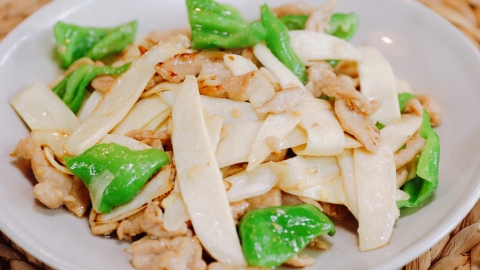Are the black spots inside the rice stem lettuce edible?
Generally speaking, whether the black spots inside the water bamboo shoot (Zizania latifolia) are edible depends on the nature of the spots. If the black spots are caused by residual Ustilago esculenta infection or normal aging, they are edible. However, if the black spots are due to mold, mildew, or pest damage, they should not be consumed. Detailed explanations are as follows:

During the growth of water bamboo shoots, they may be infected by Ustilago esculenta, a smut fungus that stimulates the stem to swell and form the edible portion. Once the shoot matures, the fungus may produce black spores, resulting in small black spots within the tissue. These spots are naturally formed, non-toxic, and harmless, and they do not affect the taste or nutritional value of the shoot. After removing the spotted portions, the shoot remains safe for consumption. Additionally, older shoots stored for extended periods may develop a few black spots due to natural tissue aging. This is considered normal and, as long as there are no signs of spoilage, the shoots can still be eaten after thorough cleaning.
If the black spots within the shoot are unevenly distributed and accompanied by symptoms such as softness, stickiness, or an unpleasant odor, it is likely due to improper storage leading to mold development or pest infestation. In such cases, the black spots may harbor numerous harmful microorganisms, and consuming them may affect health. Water bamboo shoots exhibiting such conditions should be discarded immediately.
When determining whether black spots in water bamboo shoots are edible, observe both the appearance of the spots and the overall condition of the shoot. If only a few evenly distributed spots are present and there are no other abnormalities, they can be removed and the shoot consumed. However, if the spots appear abnormal or are accompanied by signs of spoilage, it is advisable to discard the shoot to prevent possible health issues after consumption.




